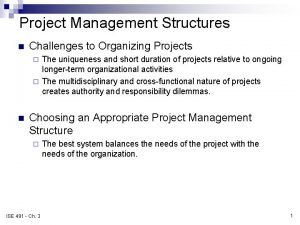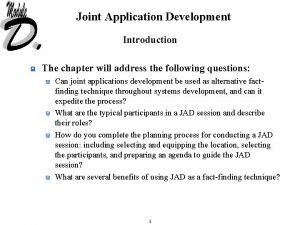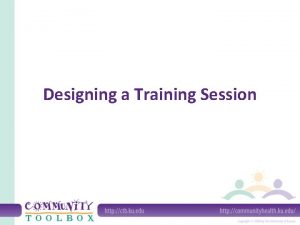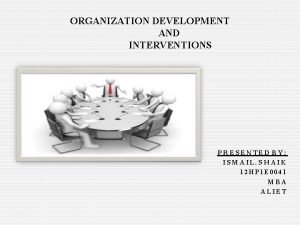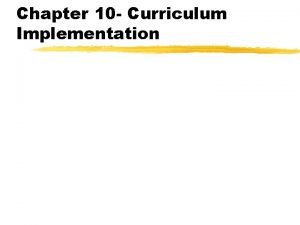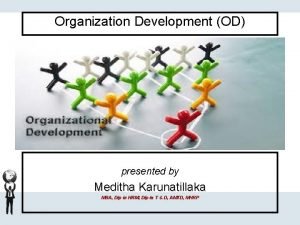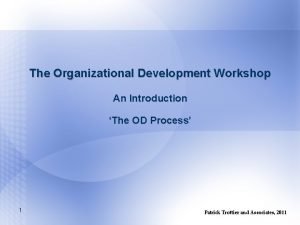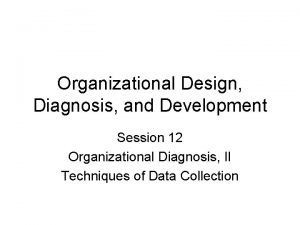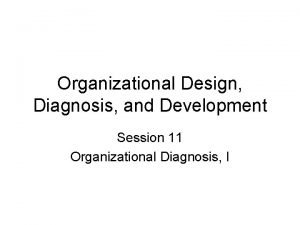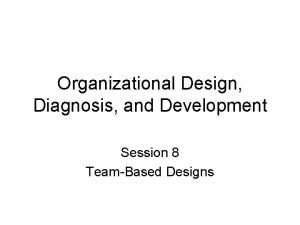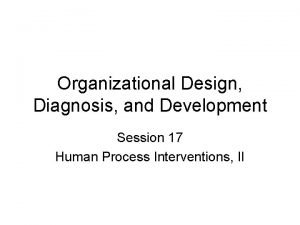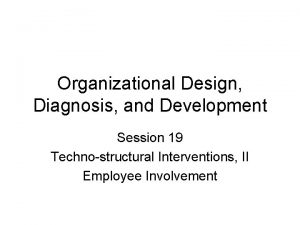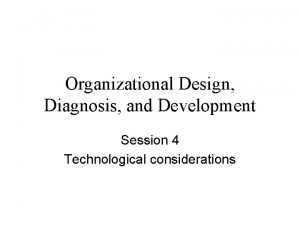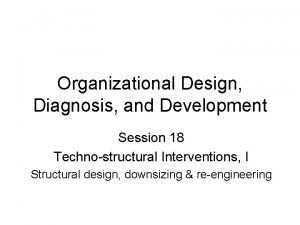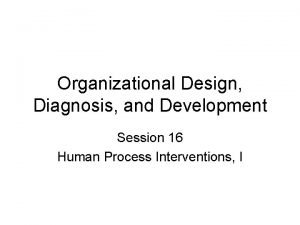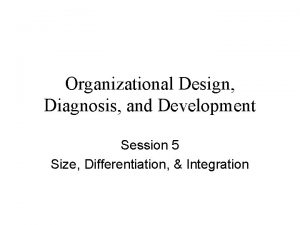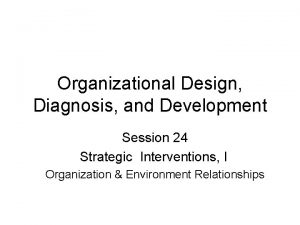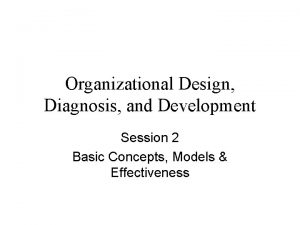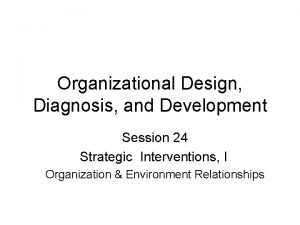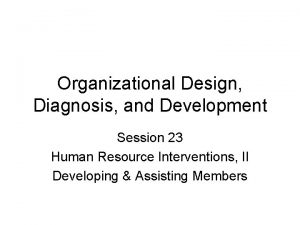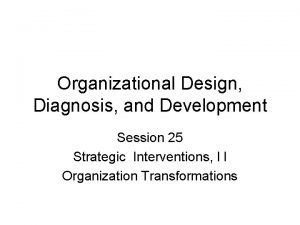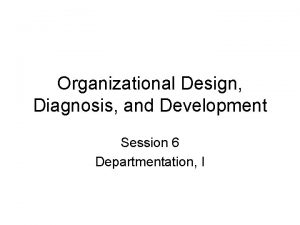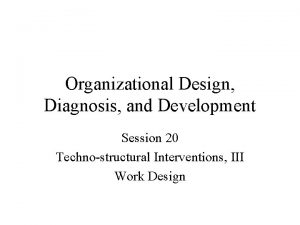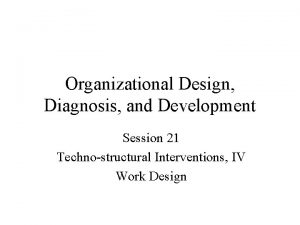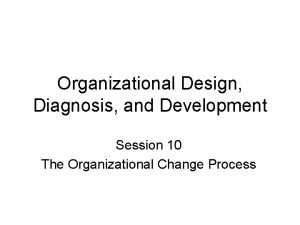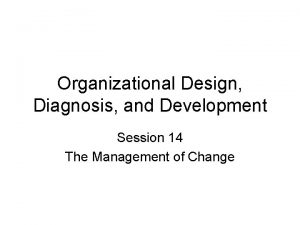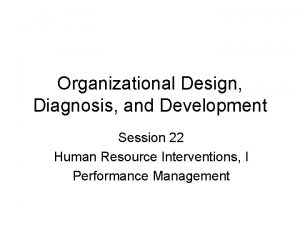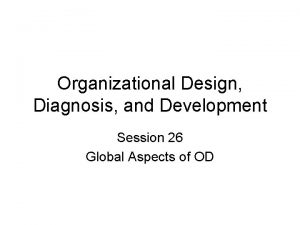Organizational Design Diagnosis and Development Session 13 Organizational























- Slides: 23

Organizational Design, Diagnosis, and Development Session 13 Organizational Diagnosis, III Survey Feedback & Design of Interventions

Objectives • To understand how data collection and feedback can be used to change behavior in organizations • To examine the data collection feedback cycle • To consider steps in feed back data • To survey various interventions and data needed for their design

MEASUREMENT GENERATES ENERGY • • • Focuses energy on area of data collection Sanctions and rewards are implied Evaluation enhances performance Explicit rewards may be offered Measurement can be counter productive – leads to inaccurate or no information – leads to misdirected energy

FEEDBACK • Defined -- information regarding actual performance or the results of the activities of a system. • Enables correction of errors • Not automatic in a social system • OD function can facilitate the feedback process

HOW DATA COLLECTION EFFECTS BEHAVIOR data collection perceived accuracy power group’s involvement motivation perceptions of data productive behavior unproductive behavior

FEEDBACK MODEL Input Process Feedback Output

MOTIVATING EFFECTS OF FEEDBACK • Through disconfirmation • Through intrinsic reward expectations • Through external reward expectations • Through cueing • Through learning

IMPLICATIONS FOR PRACTICE • Powerful groups need to be included and employees need to perceive this. • Data must not be used in a punitive fashion • Perception of data must be as accurate and valid • Feedback has to be used in a constructive fashion

DATA COLLECTION FEEDBACK CYCLE • • • Planning to use data Collecting data Analyzing data Feeding back data Following - up

EFFECTIVE FEEDBACK • • Relevant Understandable Descriptive Verifiable Limited Controllable Comparative

FEEDBACK MEETINGS • • Process issues Validating data Accepting responsibility Problem solving

APPROACHES TO FEEDBACK MEETINGS • • • Family group Survey guided Subordinate group Peer group Intergroup

EFFECTIVE INTERVENTIONS • • Readiness for change Capability for change Cultural context Abilities of the change agent

HISTORICAL DATA • Background of the organization • Immediate circumstances of the problem

STRUCTURAL DATA • Formal organization (chart, job descriptions • Goals • Tasks • Technology & environment • Financial & personnel information • Policies & procedures

FUNCTIONAL DATA • Communication systems • Organizational knowledge -- how do you get it • Organizational culture & climate • Reward systems

ATTITUDINAL DATA • • Leadership Coworkers Customers Work & Organization Competition Suppliers Host community Regulatory bodies

RELATIONAL DATA • • Time -- view of past, present, future Meaning of work Authority & power Key people & groups

STRATEGIC INTERVENTIONS • Necessary data – historic – structural – functional – attitudinal – relational

TECHNO-STRUCTURAL INTERVENTIONS • Necessary data – historic – structural – functional

HUMAN RESOURCE INTERVENTIONS • Necessary data – functional – attitudinal – relational

HUMAN PROCESS INTERVENTIONS • Necessary data – attitudinal – functional – relational

Backwards & Forwards • Summing up - Today’s session reviewed how to use survey feedback to influence change and the techniques of collecting and feeding back survey data. As a preview for considering interventions, we examined appropriate data for varying types of interventions. • Looking ahead - Next time we consider the management of change.
 Define nursing process
Define nursing process Medical diagnosis and nursing diagnosis difference
Medical diagnosis and nursing diagnosis difference Medical diagnosis and nursing diagnosis difference
Medical diagnosis and nursing diagnosis difference Nursing process and critical thinking
Nursing process and critical thinking Perbedaan diagnosis gizi dan diagnosis medis
Perbedaan diagnosis gizi dan diagnosis medis Organizational culture diagnosis worksheet
Organizational culture diagnosis worksheet Chapter 3 organization structure and culture
Chapter 3 organization structure and culture Jad session agenda
Jad session agenda Training session design
Training session design Microsoft architecture design session
Microsoft architecture design session Bhrod
Bhrod Organizational theory design and change
Organizational theory design and change Software organization structure
Software organization structure Lyngel
Lyngel Feasibility matrix example
Feasibility matrix example Political feasibility
Political feasibility Organizational design: structure, culture, and control
Organizational design: structure, culture, and control What is an organization
What is an organization Assumptions of organizational development
Assumptions of organizational development Types of od intervention
Types of od intervention Development change adalah
Development change adalah Nature of curriculum implementation
Nature of curriculum implementation Mba project on organizational development
Mba project on organizational development Patrick trottier
Patrick trottier





